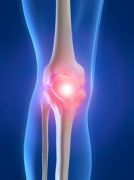Article
Patient-Reported Knee Pain Often Indicates Osteoarthritis
Author(s):
Patient-reported knee pain is associated with an osteoarthritis (OA) diagnosis, according to a study published in PLOS ONE.

Patient-reported knee pain is associated with an osteoarthritis (OA) diagnosis, according to a study published in PLOS ONE.
For their study, researchers in Vietnam interviewed 658 patients aged between 40-98 years — 488 of whom were women — using a combination of the KNEST questionnaire and knee OA classification criteria from the American College of Rheumatology (ACR). Using 9 yes or no questions, the investiagors recorded the patients’ prevalence and presence of knee pain — including pain during movement, pain when going upstairs, pain when squatting, pain at rest – stiffness <30 minutes, crepitus, bony tenderness, bony enlargement, and deformity.
The investigators then performed radiographs of patients’ knees, which were scored 0-4 using the Kellgren and Lawrence scales. An OA diagnosis consisted of a score of 2 or higher.
The investigators found a 34.2% OA occurrence, with women being more widely affected (35.3% versus 31.2%). The researchers also found a significant association between self-reported pain (35% of men and 62% of women) and knee OA [prevalence ratio (PR) 3.1; 95% confidence interval (CI) 2.0 to 4.6]. Additionally, a link between the subjects’ questionnaire scores and an OA diagnosis was also discovered.
“Among those reporting only one complaint/symptom, 27% had knee OA; this proportion increased to about 50% among those with 3 complaints/symptoms, and 92% among those with 7 or more complaints/symptoms,” the authors wrote. “After adjusting for age and body mass index (BMI), each score increase was associated with a 41% increase in the risk of knee OA (PR 1.41; 95% CI 1.27 to 1.57).”
The investigators reported the most common complaints that served as predictors of knee OA were crepitus, body enlargements, and pain when squatting. However, they found 20% of patients had OA despite reporting no complaints or symptoms in their knee.
Although the investigators determined an association between self-reported pain and OA, they noted further research is needed to draw a more nuanced comparison.
“Self-reported knee pain and complaints were strongly associated with the risk of knee OA, but the magnitude of association is not high enough for a reliable discrimination between those who have and those who do not have radiographic knee OA,” the authors concluded.





